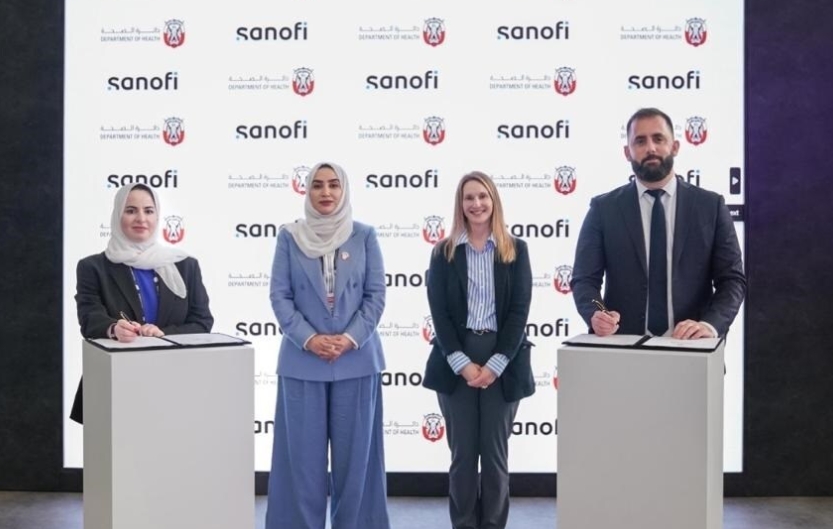
image credit- shutterstock
It’s universally acknowledged that Asia-Pacific (APAC) is a hotbed for clinical trials, with multiple reports confirming that it is the only region in the world to have seen a consistent surge in clinical trial activity. In the last five years, China, India, Australia, Japan, South Korea, and Singapore emerged as key pillars of APAC’s growing clinical trial ecosystem. Together, these six countries accounted for nearly 40,000 trials (39,843* in total) from 2020 to mid-2025.
A comparative analysis of six major countries—India, Australia, China, South Korea, Japan, and Singapore shows that China leads in the absolute number of trials (25,329), followed by South Korea (5,059), Australia (3,821), Japan (2,541), India (1,914), and Singapore (1,179). While each country brings unique strengths to the region’s clinical development ecosystem, industry sponsorship dominates overall, with particularly high shares in Japan (93 per cent), Australia (83 per cent), and South Korea (60 per cent). In contrast, India and China have a more academically driven profile, with public institutions and hospitals sponsoring the majority of trials. Singapore is more balanced (47 per cent industry / 53 per cent academia), but again, most industry trials are from global companies, not domestic biopharma.
In a phase-wise analysis, Australia and South Korea show a clear focus on early-to-mid-phase research, with over 60 per cent of trials in phase 1 or phase 2, reflecting their role in first-in-human, dose-ranging, and proof-of-concept studies. Japan and India are more concentrated in phase 3 trials, with Japan conducting 1,116 and India 506, which together account for nearly half of all trials in each country. China presents a strong early- and mid-phase pipeline with 4,177 phase 1 and 5,808 phase 2 trials, along with 6,684 non-phased studies that likely include real-world, traditional medicine, or device-focused research. Singapore, though smaller in overall volume, follows a mid- to late-stage pattern with 200 phase 2 and 260 phase 3 trials.
Across the region, oncology dominates clinical trial activity, with China leading at 11,111 cancer trials, accounting for 44 per cent of its total. Australia follows with 1,437 oncology studies, around 38 per cent of its trial base. South Korea (1,708), Japan (967), and India (1,207) also place cancer at the forefront. Singapore, despite lower volumes, maintains oncology among its top areas of research. Other key indications include neurological diseases, with high trial numbers in China (2,785), South Korea (531), and Australia (517); cardiovascular diseases, with notable activity in China (3,055), South Korea (741), and India (161); and respiratory illnesses, which saw strong focus in China (2,885), South Korea (627), and Australia (563). Infectious diseases remain prominent in China (816), India (264), and Singapore, influenced by pandemic-related efforts. Diabetes and endocrine disorders featured less prominently but registered significant numbers in China (664) and South Korea (212). Let’s look at each country in detail.
(*The data presented here is extracted from ClinicalTrials.gov and excludes studies funded by the NIH and other U.S. federal agencies. The period under review spans from January 1, 2020, to June 1, 2025.)

Table: List of clinical trials in APAC countries*
*(From January 1, 2020, to June 1, 2025)
India
India’s clinical trial landscape comprised a total of 1,914 studies between 2020 and 2025. Industry-sponsored trials accounted for 898 studies, while academic institutions, individuals, and other organisations led 1,133. It is worth noting that among the industry-sponsored studies, more than 50 per cent were backed by foreign sponsors.
The largest share of studies across this period were phase 3 trials (506), highlighting India’s strength in late-stage development, especially in generics, biosimilars, and vaccines. Early-phase trials remained modest, with just 2 classified as early-phase 1 and 96 as phase 1, highlighting the country’s continued positioning as a trial execution hub rather than a site for first-in-human studies. Phase 2 trials numbered 184, and phase 4 trials stood at 115. A significant portion, 685 studies, were marked ‘not applicable’ suggesting a large presence of observational research.
Year-on-year, 2021 saw the highest number of trials (380), likely driven by COVID-19-related activity, with phase 3 studies dominating throughout all years. Industry participation peaked in 2022 (187 trials), while academia-led research steadily outpaced industry in every year. In 2023 and 2024, while the number of new trials slightly declined, the distribution across phases remained consistent, and the share of non-phased studies grew. In 2025 so far, the number of trials is lower (124), with industry accounting for just 45 studies and over 45 per cent of trials falling under ‘not applicable.’
Indication wise, oncology dominated India’s clinical trial landscape with 1,207 studies. Infectious diseases followed with 264 trials, while neurology (229), cardiovascular (161), and respiratory (161) were other key focus areas. Overall, India’s trial profile in these five years reflects a stable phase 3 strength, rising academic involvement, and underutilised early-phase potential.
Australia
Australia’s clinical research landscape between January 2020 and June 2025 highlights its position as a global hub for early-phase, industry-led trials. A total of 3,821 trials were initiated during this period. Of these, 3,169 trials, or 83 per cent, were industry-sponsored. Nearly 90 per cent of these industry sponsors were foreign companies. The remaining 939 trials were conducted by academic institutions, hospitals, or independent investigators, indicating steady academic engagement, albeit at a lower proportion compared to countries like India and China.
Clinical trial activity in Australia peaked in 2021 with 745 trials, then stabilised across 2022–2024, averaging around 700 annually. In 2025, 276 trials have already been initiated, indicating a steady trend.
By the trial phase, Australia continued to solidify its standing in early-stage research, with 1,173 phase 1 and 1,176 phase 2 trials conducted, together comprising over 60 per cent of all registered studies. Phase 3 trials remained strong (1,100), underscoring Australia’s growing role in late-stage multicentre studies, while phase 4 trials were relatively limited (62), consistent with its focus on pre-approval testing rather than post-marketing surveillance.
Therapeutically, oncology dominated, accounting for 1,437 trials, or nearly 38 per cent of all studies. Other high-focus areas included respiratory (563 trials), neurological (517), cardiovascular (405), and infectious diseases (174).
Australia’s early-phase strengths, streamlined approvals, robust infrastructure, and favourable tax incentives ensure that it remains a critical node in the global clinical trial ecosystem.
China
China’s clinical research activity between 2020 and 2025 reflects its emergence as a major global player in clinical development. During this period, a total of 25,329 clinical trials were initiated, highlighting the scale and ambition of China’s R&D ecosystem., Majority of these trials—over 75 per cent (19,146 studies)—were sponsored by academic institutions, hospitals, or other non-industry organisations, highlighting the significant role of government-backed research centres, public hospitals, and universities in advancing clinical science. That said, 7,771 trials were led by industry (largely domestic companies,) a number that continues to grow as more domestic biopharma companies shift from generics to innovative R&D.
China’s clinical trial activity from 2020 to 2025 is heavily concentrated in early and mid-stage development. Phase 1 (4,177) and phase 2 (5,808) trials together make up nearly 10,000 studies, reflecting a strong pipeline of investigational therapies. Phase 3 trials (2,579) show China’s rising participation in late-stage and pivotal studies. The country also recorded 1,169 phase 4 trials and 6,684 studies marked not applicable, indicating a broad base of observational research, device studies, traditional medicine, and post-marketing surveillance. Early Phase 1 trials (655) point to growing, but still developing, capacity for first-in-human research.
Clinical trial activity in China rose steadily from 2020 to 2024, peaking at 5,433 trials in 2024, driven by ongoing NMPA reforms, and government efforts to position China as a hub for innovation and global multicentre studies. In 2025 2,020 trials have already been launched, signalling continued momentum.
Therapeutically, China’s focus is broadly aligned with its shifting disease burden. Oncology leads overwhelmingly, with 11,111 cancer trials, making up nearly 44 per cent of all studies—driven by an urgent need for more effective treatments, local innovation in cell therapies, and the globalisation of cancer R&D. Other key indications include Cardiovascular (3,055), respiratory (2,885), and neurological disorders (2,785), infectious diseases (816) and diabetes (664).
Chinese pharmaceutical companies are rapidly expanding their clinical development footprint beyond domestic borders, signalling a shift toward global innovation.
“In recent years, dozens of China-based biotech and pharma companies are conducting clinical trials within Asia-Pacific. In 2024, about 136 clinical trials sponsored by Chinese pharmaceutical companies were conducted mostly in North America, Australia, and Asia outside of China. The R&D areas of Chinese pharmaceuticals are changing from me-too or me-better to innovative new drugs. Global standards of study design, endpoint assessments, clinical operation, statistical analysis, and data management are widely applied in local trials. NMPA also published lots of guidance and working procedures to shorten the study start-up and drug approval timeline. An increasing number of Chinese sites and investigators have experience conducting MRCTs to support new drug global marketing applications,” said Masayuki Takahashi, Director, Asia Business Office and Project Management, Linical.
South Korea
South Korea’s clinical trial activity between January 2020 and June 2025 reflects a steadily expanding ecosystem. A total of 5,059 clinical trials were initiated—60 per cent (3,036) were industry-sponsored and 40 per cent (2,023) came from academic institutions, hospitals, and research centres. Among industry trials, 56.8 per cent were backed by foreign sponsors and 43.2 per cent by domestic ones, reflecting a near-even split.
The country continues to play an increasingly important role in early- and mid-stage development, with 955 phase 1 trials and 990 phase 2 trials, indicating its attractiveness for both first-in-human and proof-of-concept studies. A significant number of phase 3 trials (1,110) and over 230 phase 4 trials also underline its capabilities in late-stage and post-marketing studies.
South Korea saw peak trial activity in 2021, driven by both COVID-19 research and a strong surge in early-phase oncology trials. Activity stabilised around 950–1,000 trials annually in subsequent years.
Oncology remains the most researched area by far, with 1,708 trials, followed by cardiovascular (741), respiratory (627), neurological (531).
South Korea continues to punch above its weight in global clinical research, both in volume and sponsor engagement.
“In terms of global trial activity, Korea ranked 4th worldwide in clinical trial registrations in 2023, with Seoul ranking 1st among cities. For pharma-sponsored global trials, Korea held the 5th position in 2022–2023, and in 2024, it ranked 6th globally with a market share of 3.46 per cent, following the United States, China, Australia, Spain, and Germany,” said Takahashi.
Japan
Japan’s clinical trials landscape between January 2020 and June 2025 reflects a stable, industry-led ecosystem that continues to attract multinational pharmaceutical companies. During this period, a total of 2,541 clinical trials were initiated. Of these, 2,356 trials, or 93 per cent, were sponsored by industry. Most of these were led by multinational corporations.
Only 318 trials were sponsored by academic institutions, hospitals, or other non-industry organisations, underscoring the heavily commercial nature of clinical research in the country and the relatively limited role of investigator-initiated trials compared to peers like South Korea or India.
Japan continues to serve as a key site for late-stage clinical development. Phase 3 trials (1,116) made up nearly 44 per cent of all activity, reflecting the country's importance in confirmatory studies and regional registration strategies. Phase 1 and 2 trials accounted for 482 and 644 studies, respectively, indicating a moderate but steady pipeline of early-phase innovation. Phase 4 trials (41) remained relatively limited, aligning with Japan’s focus on pre-approval evidence generation over post-marketing research.
Trial volumes remained consistent year over year, peaking in 2021 with 566 trials, followed by slightly lower but stable activity from 2022 to 2024, with an average of around 450 trials annually.
Therapeutically, oncology dominates, with 967 cancer trials, making up more than one-third of the total. Other focus areas include respiratory (416 trials), cardiovascular (306), and neurological disorders (277)—each aligned with Japan’s ageing population and shifting disease burden.
Singapore
Singapore’s clinical trial ecosystem from January 2020 to June 2025 reflects its role as a strategically positioned, innovation-friendly hub. A total of 1,179 clinical trials were initiated during this period, with industry sponsors accounting for 551 trials (47 per cent) and academic institutions, hospitals, and research organisations contributing 718 trials (53 per cent). While this suggests a balanced ecosystem on paper, the majority of industry-led trials were driven by multinational companies.
By trial phase, the country’s research leaned moderately toward mid- and late-stage development, with 133 phase 1 trials, 200 phase 2, and 260 phase 3 studies. Phase 4 trials remained low at just 22, while a significant number—436 trials were marked as ‘Not Applicable,’ likely representing observational studies, device trials, or early feasibility studies outside standard classification.
On a year-wise basis, trial volume remained stable, averaging around 220 trials annually, with a slight dip in 2024 (179 trials). The peak came in 2021 (276 trials), coinciding with heightened global research activity during the COVID-19 pandemic. Overall, Singapore remains a key contributor to global drug development.
Addressing APAC trial challenges
Conducting clinical trials is inherently complex, and in the Asia-Pacific region, these challenges are compounded by the diversity of regulatory frameworks, healthcare systems, and cultural landscapes. Navigating this complexity requires deep local knowledge, strategic coordination, and adaptive operational models.
“APAC countries have varying regulatory requirements and startup timelines, which can complicate trial planning,” said Dr Yooni Kim, Managing Director - Asia Pacific, Novotech. She added, “Beyond formal regulations, understanding the cultural and institutional nuances of each country is essential.”
This becomes particularly important when addressing broader operational challenges in countries such as China. “The challenges include meeting China RA submission dossier requirements, adapting study plans to Chinese clinical practice, selecting the best possible sites based on specific demographic and epidemiological characteristics, managing linguistic and cultural aspects, fostering effective communication between all parties involved in the project (sponsor, investigators, site’s staff, etc.), data management being aligned with international standards, and maintaining interaction with local regulatory authorities,” said Takahashi.
Some of the other challenges in conducting clinical trials across APAC include streamlining contract negotiations and ensuring data quality and participant recruitment. Contracting processes can become bottlenecks due to site-specific legal requirements and lengthy review procedures, often delaying study startup.
“While APAC offers one of the largest and most diverse ethnic populations in the world, some sponsors face challenges in obtaining consistently high-quality data in certain countries,” said Dr Kim. Addressing this requires strong local oversight, active site engagement, and standardised operational practices across trial locations to ensure consistency and reliability.
Takahashi agrees, “In some countries, for example, in Korea, it can sometimes be challenging to find and enroll patients, especially for high-demand indications like cancer. To address this, sponsors and CROs engage patient communities and utilise online recruitment platforms to reach a broader population.”
Finally, building and retaining skilled clinical trial talent is essential to the long-term success of research across the Asia-Pacific region. Workforce capacity and capability remain key determinants of trial quality and execution. Addressing this requires sustained investment in training, professional development, and partnerships with academic and research institutions to ensure a robust and future-ready talent pipeline.
Over the recent years, the APAC region has undergone a significant transformation in its clinical research landscape. This is driven by regulatory reforms, growing academic–industry collaboration, and rising domestic innovation. From first-in-human studies to multi-regional pivotal trials, the region is now a key engine of global clinical development.
“The demand for more sophisticated trials, including early-phase studies and advanced therapies, is catalysing infrastructure upgrades across APAC. Asia-Pacific countries are investing heavily in the infrastructure and talent needed to support these modalities. Many sites now feature state-of-the-art laboratories, biomanufacturing facilities, and specialised teams trained in cutting-edge research. This positions the region as a competitive and attractive destination for global sponsors pursuing innovative therapeutic solutions. As a result, APAC is no longer seen as a secondary or backup region but as a strategic hub for global clinical development,” concludes Dr Kim.
Ayesha Siddiqui




